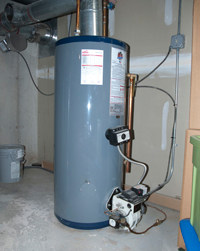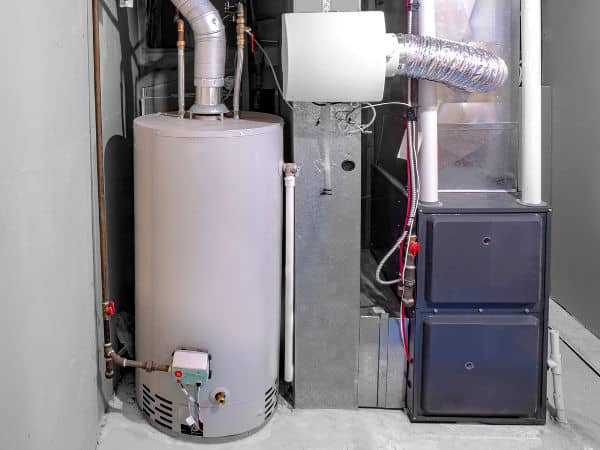The content following next in relation to Tips on Maintaining a Water Heater is indeed engaging. Don't skip it.

Warm water is crucial for day-to-day convenience, whether it's for a revitalizing shower or cleaning recipes. To guarantee your warm water system runs successfully and lasts much longer, normal upkeep is vital. This write-up gives sensible pointers and understandings on just how to keep your home's warm water system to stay clear of disturbances and expensive repair services.
Intro
Preserving your home's hot water system might appear complicated, yet with a couple of simple steps, you can ensure it operates smoothly for years to find. This guide covers everything from recognizing your warm water system to do it yourself maintenance suggestions and knowing when to call in specialist aid.
Value of Preserving Your Hot Water System
Regular upkeep not just prolongs the lifespan of your warm water system yet likewise ensures it operates successfully. Ignoring maintenance can lead to lowered effectiveness, higher energy bills, and even early failing of the system.
Signs Your Warm Water System Demands Maintenance
Knowing when your warm water system needs attention can protect against significant issues. Keep an eye out for signs such as irregular water temperature level, unusual sounds from the heating unit, or rusty water.
Purging the Hot Water Heater
Flushing your hot water heater eliminates debris accumulation, improving performance and extending its life.
Checking and Changing Anode Rods
Anode rods protect against rust inside the tank. Checking and replacing them when broken is important.
Complex Concerns Needing Specialist Assistance
Instances consist of significant leaks, electrical issues, or if your water heater is consistently underperforming.
Regular Professional Upkeep Benefits
Expert upkeep can include detailed evaluations, tune-ups, and ensuring compliance with safety and security requirements.
Evaluating and Changing Temperature Setups
Readjusting the temperature setups ensures optimum performance and security.
Do It Yourself Tips for Maintenance
You can do several maintenance jobs yourself to keep your warm water system in top condition.
Looking for Leaks
Frequently evaluate pipes and links for leakages, as these can result in water damages and greater bills.
Comprehending Your Warm Water System
Before diving into upkeep jobs, it's useful to comprehend the standard parts of your warm water system. Generally, this consists of the hot water heater itself, pipes, anode rods, and temperature controls.
Month-to-month Upkeep Tasks
Normal monthly checks can help catch minor concerns prior to they escalate.
Evaluating Stress Alleviation Valves
Examining the pressure relief valve ensures it works appropriately and prevents too much pressure buildup.
Protecting Pipelines
Shielding warm water pipelines reduces heat loss and can save energy.
When to Call an Expert
While do it yourself upkeep is valuable, some concerns call for specialist proficiency.
Conclusion
Routine maintenance of your home's hot water system is necessary for performance, long life, and price financial savings. By adhering to these pointers and recognizing when to look for specialist aid, you can ensure a reliable supply of warm water without unanticipated interruptions.
How to Maintain an Instant Hot Water Heater
Before tinkering with your hot water heater, make sure that it’s not powered on. You also have to turn off the main circuit breaker and shut off the main gas line to prevent accidents. Also turn off the water valves connected to your unit to prevent water from flowing into and out of the appliance. 2. When you’re done, you have to detach the purge valves’ caps. These look like the letter “T†and are situated on either side of the water valves. Doing so will release any pressure that has accumulated inside the valves while at the same time avoid hot water from shooting out and burning your skin. 3. When the purge valves’ caps are removed, you have to connect your hosing lines to the valves. Your unit should have come with three hoses but if it didn’t, you can purchase these things from any hardware or home repair shops. You can also get them from retail stores that sell water heating systems. Read the user’s manual and follow it to complete this task properly. When the hosing lines are connected, open the purge port’s valves. 4. You should never use harsh chemical cleaners or solutions when cleaning your unit. Make use of white vinegar instead. It should be undiluted and you’ll probably use about 2 gallons. 5. Now flush your water heater. This task should probably take about 40 minutes. We can’t give you specific directions for this because the procedure is carried out depending on the type, model and brand of your heater. With that being said, refer to the user’s manual. 6. When you’re done draining the unit, you have to turn off the purge port valves again. Remove the hosing lines that you earlier installed on each of the water valves. Put the valve caps (purge port) back in their respective places and be very careful so as not to damage the rubber discs that are found inside these caps. 7. Now that everything’s back in place, check your user’s manual again to find out how to reactivate your water heating system. 8. Once it is working, turn one of your hot water faucets on just to let air pass through the heater’s water supply pipes. Leave the tap on until water flows smoothly out of it. https://www.orrplumbing.com/blog/2014/september/how-to-maintain-an-instant-hot-water-heater/

We are very inquisitive about What Kind of Maintenance Do Water Heaters Need? and I am praying you liked my blog post. Do you know somebody else who is excited about the topic? Be sure promote it. Thank you so much for your time invested reading it.
Book